Discover 11 hidden attractions, cool sights, and unusual things to do in Alicante (Spain). Don't miss out on these must-see attractions: Castell de la Santa Bàrbara, Estadio José Rico Pérez, and Mount Benacantil. Also, be sure to include Playa del Postiguet in your itinerary.
Below, you can find the list of the most amazing places you should visit in Alicante (Valencia).
Table of Contents
Castell de la Santa Bàrbara
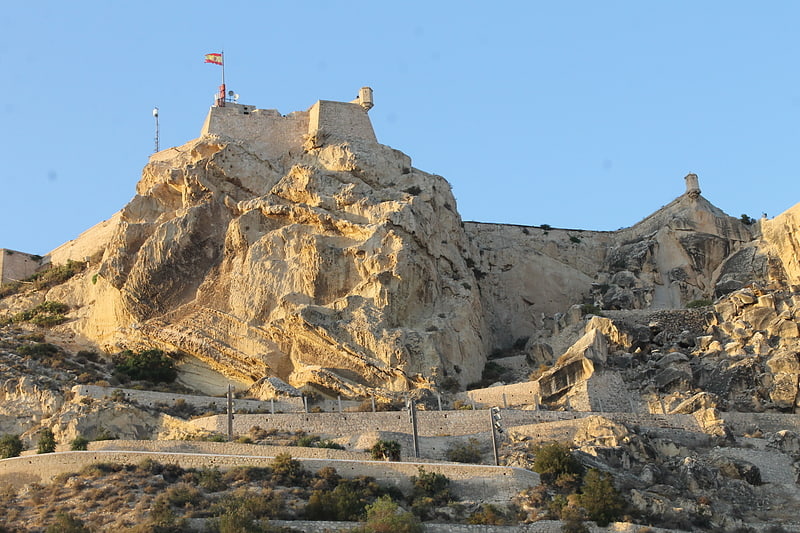
Also known as: Castillo de Santa Bárbara
Ancient fortress with panoramic views. Santa Bárbara Castle is a fortification in the center of Alicante, Spain. It stands on Mount Benacantil.[1]
Address: Plaza del Cuartel, 03002 Alicante
Estadio José Rico Pérez

Multi-purpose stadium in Alicante, Spain. Estadio José Rico Pérez is a multi-purpose stadium in Alicante, Spain. It is currently used mostly for football matches, being home to Hércules CF. It also hosted World Cup matches when Spain organized the event in 1982. With a capacity of 29,500 seats, it is the 19th-largest stadium in Spain and the 3rd-largest in the Valencian Community. It was built in 1974, and is situated 2 miles outside Alicante city centre. The stadium is named after the former chairman of Hércules CF, José Rico Pérez.[2]
Address: Calle Foguerer Jose Romeu Zarandieta s/n, 03005 Alicante
Mount Benacantil
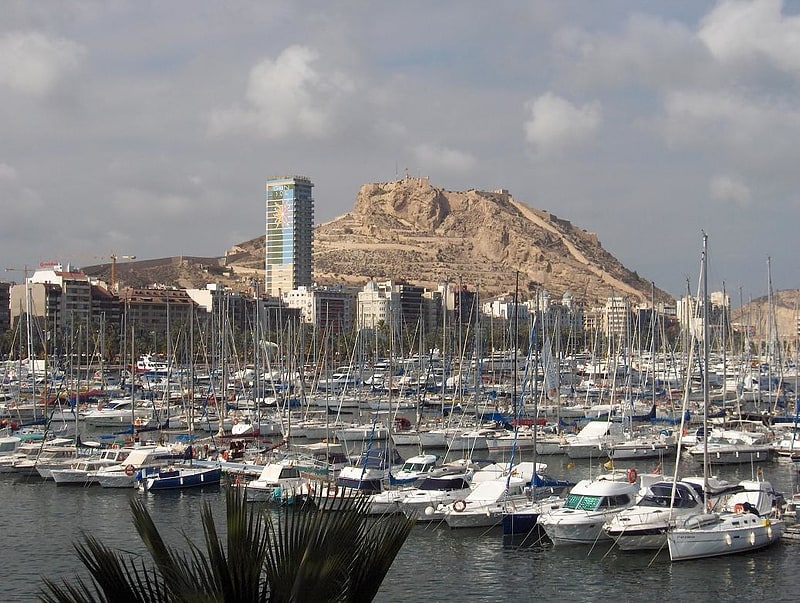
Also known as: Benacantil
Peak with a historic fortress on top. Mount Benacantil is a mount that dominates the urban part of Alicante, and is the characteristic image of the city. The mount name appears as Banu-l-Qatil in the work of Muslim geographer Al-Idrisi in the 12th century, but it is possible that this is an error of transcription because it does not make sense in Arabic. Compared with other names in the Valencian Community, the mount name is more likely to be derived from the word "benna", an Arabic transcription of "pinna", which is "rock" in Latin; combined with the adjective "laqanti", which comes from "Laqant," the Arabic name of the city. Therefore, a half Roman, half Arabic toponym, "Benna Laqanti".
The rock mount is covered by pine trees and bushes on the north side, while on the south side, which overlooks the Mediterranean Sea, there are only rocks. In the intermediate areas there are bushes and grasses that are quite characteristic for the dry Mediterranean climate.
The mount is famous for the rock formation on its south-western slope, known as la cara del moro ("the moor's face").(view image)
The medieval fortress of Alicante, the Castle of Santa Bárbara stands on the top of the mount. On the slopes of the mount there are Park Ereta, neighborhoods of Santa Cruz, San Roque, San Anton and Raval Roig, and antique apartments. In recent years it became a botellón place.
Avenida Jaime II, which is a continuation of Avenida de Alfonso el Sabio, crosses the northern foot of the mount, and so does a tunnel of Alicante Tram.[3]
Playa del Postiguet
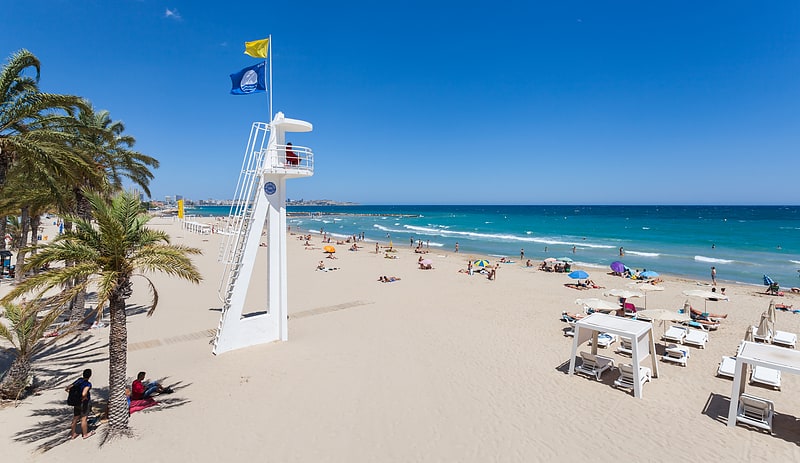
Postiguet Beach, or simply El Postiguet, is located in the Spanish city of Alicante, in the Ensanche Diputación neighbourhood, bordering the Santa Cruz and Raval Roig-Virgen del Socorro neighbourhoods.
Address: Playa del Postiguet, Alicante
Alicante Museum of Contemporary Art
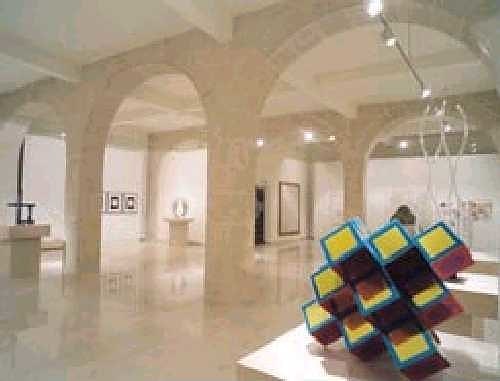
Also known as: Museo de Arte Contemporáneo de Alicante
Museum in Alicante, Spain. Alicante Museum of Contemporary Art is a municipal museum in Alicante, Spain. It exhibits 20th-century and contemporary art. Created in 1976 thanks to Eusebio Sempere, and reopened in 2011 after a major renovation, the museum now consists of three permanent collections of about 800 art pieces. The museum is located in Asegurada building, the oldest civil building remaining in the city.
There are three permanent collections at the museum on display:
- Collection of 20th-century art includes works by Joan Miró Pablo Picasso, Salvador Dalí, Juan Gris, Julio González and others. It was collected by Eusebio Sempere through arduous purchases and work exchange and was generously donated to the city on 1976.
- Juana Francés Collection is composed of paintings, sketches, and other graphic works by Alicante-born Juana Francés. The collection was bequeathed to the city of Alicante by the artist, and was acquired upon her death in 1990.
- Eusebio Sempere Collection consists of various works by Eusebio Sempere from gouaches on paper to sculptures. The collection has been acquired by the city since 1997.
Not all works from the collections are on display. Only one third of the Eusebio Sempere Collection is shown at a time with rotation every three to four months.
The museum building, in turn, is another example of modern art by Spanish architects Sol Madridejos and Juan Carlos Sancho. The modern building incorporates the original Casa de la Asegurada, which is the oldest civil building in Alicante that was built in 1685. Constructed originally as a granary it has also served throughout the history as jail, powder storage, school of commerce, and once as a temporary seat of City Hall. The original building is a notable example of Alicante's baroque architecture.[4]
Address: Plaza Santa Maria,3, 03002 Alicante
Archaeological Museum of Alicante
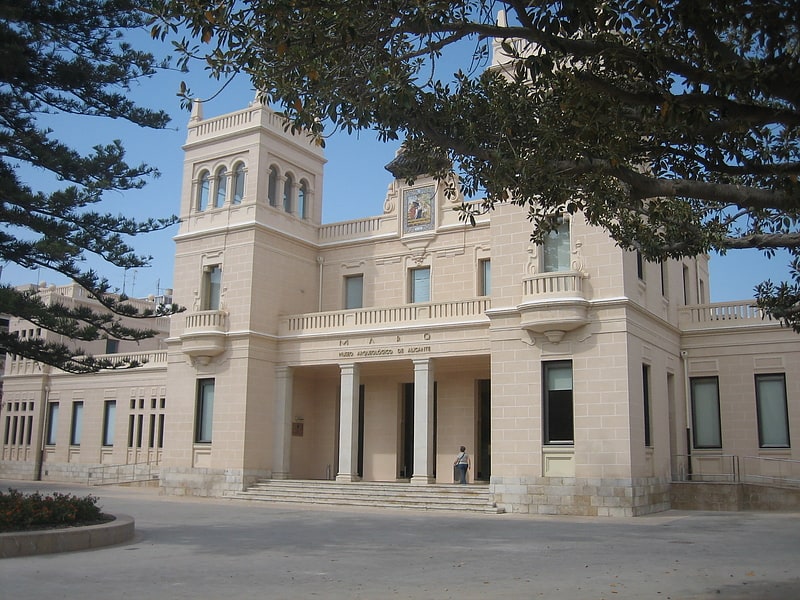
Also known as: Museo Arqueológico de Alicante
Interactive archaeology museum. The Archaeological Museum of Alicante is an archaeological museum in Alicante, Spain. The museum won the European Museum of the Year Award in 2004, a few years after significant expansion and reallocation to renovated buildings of the antique hospital of San Juan de Dios. The museum houses eight galleries that use multimedia to allow visitors to interact with the lives of past residents of the region.[5]
Address: Plaza Doctor Gomez Ulla s/n, 03013 Alicante
Basílica de Santa María

Prominent Gothic church from the 1500s. The Basilica of Santa Maria is the oldest active church in Alicante, Spain. It was built in Valencian Gothic style between the 14th and 16th centuries over the remains of a mosque.
The basilica is composed from a single nave with six side chapels located between the buttresses. In 2007, by request of the city of Alicante to the Holy See, the church was promoted to the rank of basilica.[6]
Address: Plaza Sta. María, 1, 03002 Alicante
Concatedral de San Nicolás

Blue-domed 1600s cathedral and cloisters. The Co-cathedral of Saint Nicholas of Bari is a Roman Catholic co-cathedral located in Alacant, in the Valencian Community of Spain. The church, part of the Diocese of Orihuela-Alicante is dedicated to Saint Nicholas and was elevated to the title of cathedral on 9 March 1959 by Pope John XXIII.[7]
Address: Plaza del Abad Penalva, 2, 03002 Alicante
Mubag
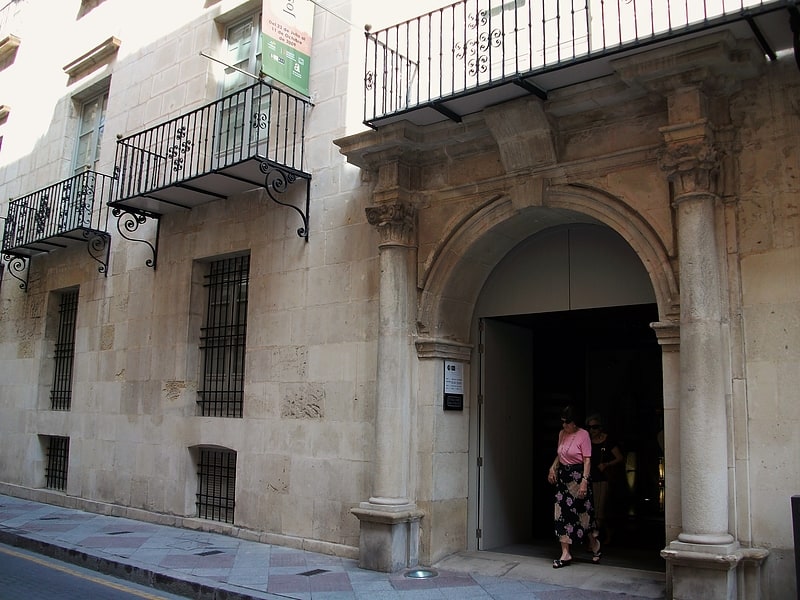
Also known as: Museo de Bellas Artes Gravina
18th-century palace and Spanish art museum. Gravina Museum of Fine Arts is a museum in the city of Alicante, Spain, located in the Palacio del Conde de Lumiares, a four floor building constructed between 1748 and 1808 and declared a historical monument.
The museum is devoted to painting and sculpture of Alicante from the sixteenth century to the early decades of the twentieth century. In the museum there are nearly 500 works from funds of the provincial council, including a sculpture by Francisco Salzillo, and a portrait of Ferdinand VII by Valencian painter Vicente López Portaña. The museum has also several works of the most important regional painters of the nineteenth century: Antonio Gisbert, Joaquín Agrasot, Lorenzo Casanova, and Fernando Cabrera Cantó. These works reflect the major trends of the nineteenth century: historicism, customs, portraits, landscapes.[8]
Address: Calle Gravina 13, 03002 Alicante
Port of Alicante

Also known as: Puerto de Alicante
The Port of Alicante is a seaport in Alicante, Spain on the Mediterranean Sea used for commercial and passenger traffic. The port is administered by the Port Authority of Alicante.[9]
Lucentum Archaeological Site

Lucentum, called Lucentia by Pomponius Mela, is the Roman predecessor of the city of Alicante, Spain. Particularly, it refers to the archaeological site in which the remains of this ancient settlement lie, at a place known as El Tossal de Manises, in the neighborhood of Albufereta.[10]
Address: C/ de Zeus, s/n, Alicante